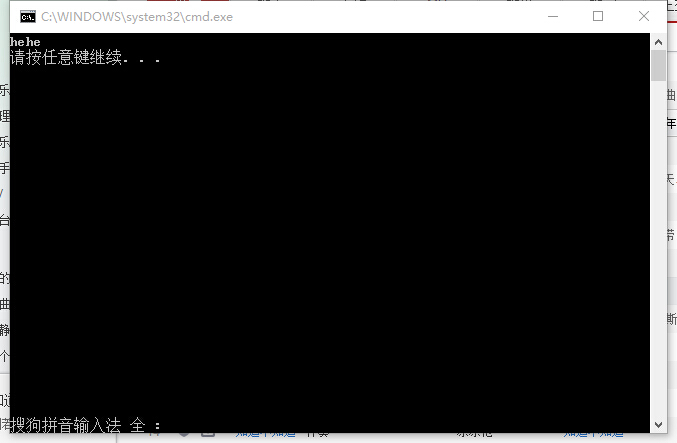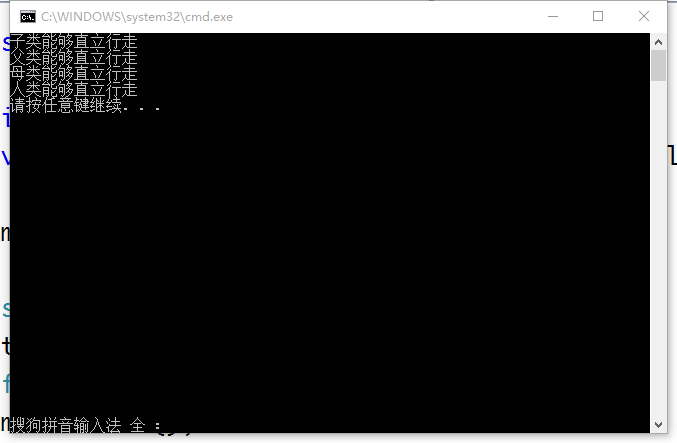当一个基类产生多个子类,这些子类又产生新的子类时,调用基类的成员函数会产生二义性问题
代码示例
1 /* human 2 / 3 mother father 4 / 5 son 6 */ 7 #include <iostream> 8 using namespace std; 9 class human 10 { 11 public: 12 void stand(){ cout << "hehe" << endl; } 13 }; 14 class mother :public human 15 { 16 17 }; 18 class father :public human 19 { 20 21 }; 22 class son :public father, public mother 23 { 24 25 }; 26 int main() 27 { 28 son tom; 29 //tom.stand()//会有二义性,编译器不知道stand()函数是指从mother继承来的还是从father继承来的 30 tom.mother::stand();//指明stand()函数是从mother那里继承来的,用::标识符(成员限定符) 31 return 0; 32 }
结果演示

定义为虚基类可解决二义性问题,不必再添加成员限定符
代码演示
1 #include <iostream> 2 using namespace std; 3 class human 4 { 5 public: 6 void stand(){ cout << "人类能够直立行走" << endl; } 7 }; 8 class mother :virtual public human //virtual的意思是虚的,也就是定义虚基类 9 { 10 11 }; 12 class father :virtual public human //每个子类都定义虚基类 13 { 14 15 }; 16 class son :public father, public mother 17 { 18 public: 19 20 }; 21 int main() 22 { 23 father mike; 24 mike.stand(); 25 mother jane; 26 jane.stand(); 27 human man; 28 man.stand(); 29 son tom; 30 tom.stand(); 31 return 0; 32 }
结果演示

或者是每个类都定义自己的成员函数,函数名可以相同,编译时自动调用
代码示例
1 #include <iostream> 2 using namespace std; 3 class human 4 { 5 public: 6 void stand(){cout<<"人类能够直立行走"<<endl;} 7 }; 8 class mother:virtual public human 9 { 10 public: 11 void stand(){cout<<"母类能够直立行走"<<endl;} 12 }; 13 class father:virtual public human 14 { 15 public: 16 void stand(){cout<<"父类能够直立行走"<<endl;} 17 }; 18 class son:public father,public mother 19 { 20 public: 21 void stand(){cout<<"子类能够直立行走"<<endl;} 22 }; 23 int main() 24 { 25 son tom; 26 tom.stand(); 27 father mike; 28 mike.stand(); 29 mother jane; 30 jane.stand(); 31 human man; 32 man.stand(); 33 return 0; 34 }
结果演示
